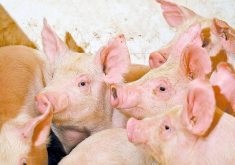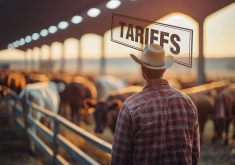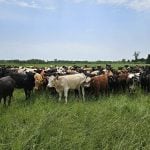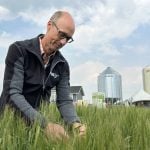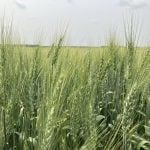Outbreaks of avian influenza in the past years have caused concern with the biosecurity of small backyard flocks. There is suspicion that those flocks might play a role in transmitting the virus from wild waterfowl hosts to large commercial flocks.
Maintaining biosecurity is an important step in keeping a backyard flock of birds healthy, says Delores Peters, an epidemiologist with Alberta Agriculture. She outlined some key points for bird biosecurity to attendees at the Wetaskiwin Rabbit and Poultry show.
Peters said biosecurity emphasizes disease prevention, but it is not a 100 per cent guarantee that illness will not happen.
Read Also

Horns aren’t unlocking anytime soon on livestock transport standards
Standards good enough meet the definition of “humane” animal transportation still vary widely between what what industry wants, what animal rights advocates want and, between the two, what federal regulators decide is good enough.
“You all know the people who eat healthy, and don’t smoke and run, and have heart attacks or get cancer,” she said. “Biosecurity reduces the risk so we can help ourselves and help our animals.”
Maintaining biosecurity in bird populations means keeping birds secure from biological threats such as infectious diseases, bacteria, viruses and other microbes such as protozoa and worms, said Peters. Diseases can spread from sick birds to through sneezing, or coughing. Pens, water or feed can also be contaminated by other birds, or from people or other animals who bring pathogens into an environment.
“There are bacteria that aren’t particularly fussy. They’ll live in a mouse, or a bird or a human, and that bacteria can get into your birds,” Peters said.
Animals who wander around a farm can also carry diseases or give each other diseases. Dogs that walk through all the pens on the farms can spread diseases from groups of animals to another. Wild animals and pests such as mice can carry diseases such as salmonella, which can live in a variety of hosts.
“Some viruses are just carried, but some are flexible. Salmonella, for example, can live in many species and make them sick or not make them sick, and still be viable,” said Peters.
“Once you know how disease spreads, you can think about how you can break that cycle,” said Peters.
Avian influenza for instance is spread through manure. Bodily fluids such as mucus or blood can also be sources of diseases. These fluids can get on farm equipment or footwear and can cause contamination. Washing footwear, vehicles and clothing after visiting other farms is a good way to prevent contamination, Peters said. Disease can also be prevented by isolating sick birds and cleaning areas where sick birds have been.
Water containers and watering systems should be washed between groups of birds.
———
“Therearebacteriathataren’tparticularlyfussy.They’llliveinamouse,orabirdorahuman,andthatbacteriacangetintoyourbirds.”
DELORES PETERS
AARD




